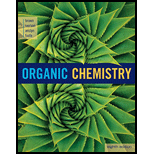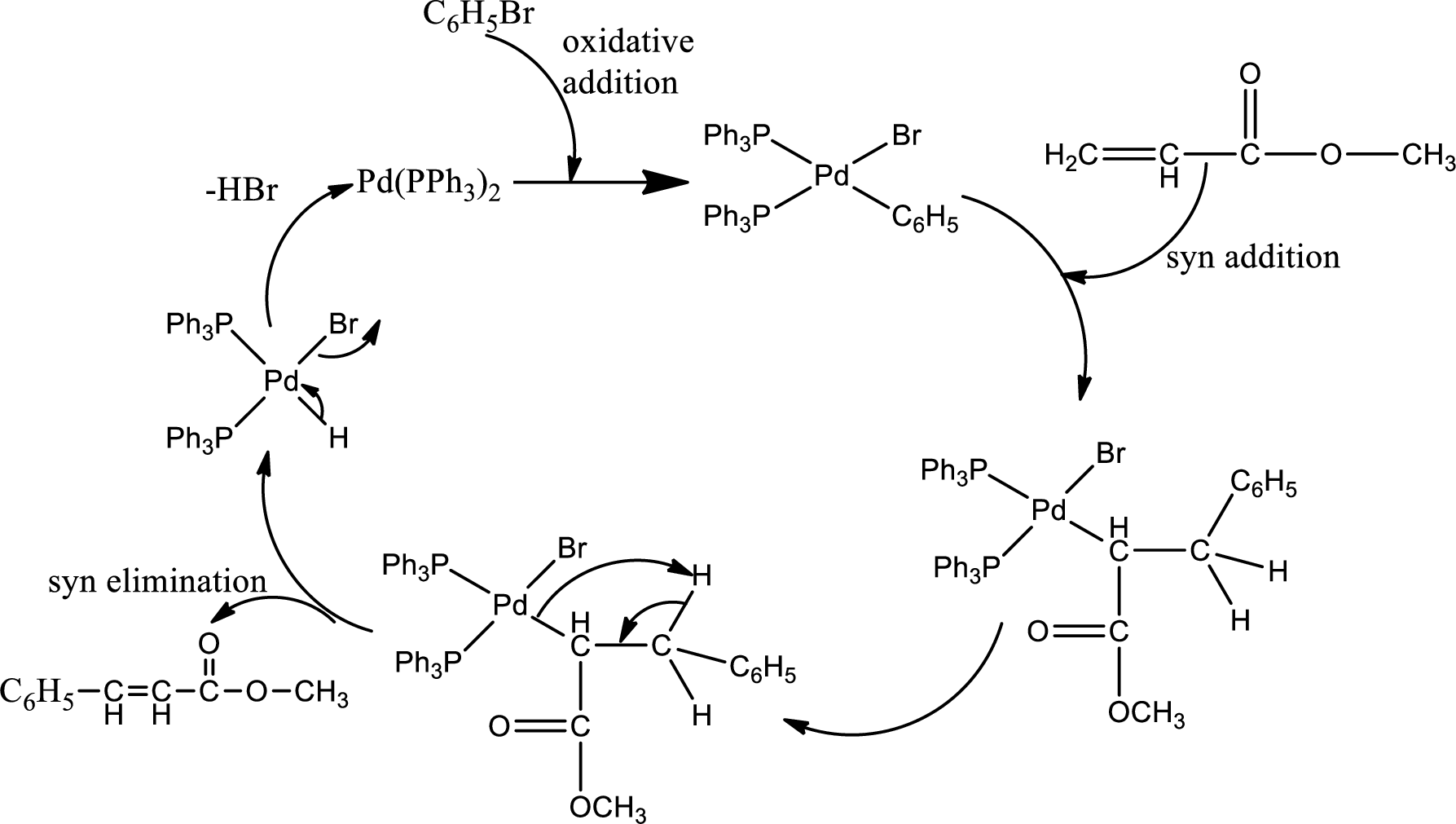
Interpretation:
When the starting
Concept Introduction:
Heck reaction:
A palladium-catalyzed reaction of the carbon group of a haloalkene substituted for a hydrogen on double bonded carbon of an alkene is said to be Heck reaction.

Explanation of Solution
The given reaction is

Mechanism:
Step-1:
Formation of Heck catalyst:
Heck catalyst s formed by the reduction of palladium from

Step-2:
Catalytic cycle for the formation of product:

The addition of alkene to the catalyst is syn addition and elimination of product is also syn elimination. The inversion of configuration occurs in the addition and forms E-product.
Want to see more full solutions like this?
Chapter 24 Solutions
Organic Chemistry
- help draw the moleculearrow_forwardHow to draw this claisen condensation reaction mechanisms/arrow_forwardWrite all of Me Possible Products For each Of the Following reactions. In each case identity all pains of enantiomers, all digsterzoners and all Meso compounds 9. 11-60 11-0-11 V-G Η Η H ~ C-11 +HB+ - 1 H b. पन्ना 171-0-11 H-C-H Н C-C=c-call +HBr Perendez ==arrow_forward
- How can i draw the mechanisms for this molecule?arrow_forwarda. Discuss and explain he difference IN Stability between the Chai and Boat Гольцу от судомехане b. For the Following Molecule draw both possible Clain conformations and explain which one is more stable and for what Reason. H. CH₂ CH₂ H "Harrow_forwarddraw out these molecules pleasearrow_forward
 Organic ChemistryChemistryISBN:9781305580350Author:William H. Brown, Brent L. Iverson, Eric Anslyn, Christopher S. FootePublisher:Cengage Learning
Organic ChemistryChemistryISBN:9781305580350Author:William H. Brown, Brent L. Iverson, Eric Anslyn, Christopher S. FootePublisher:Cengage Learning Organic Chemistry: A Guided InquiryChemistryISBN:9780618974122Author:Andrei StraumanisPublisher:Cengage Learning
Organic Chemistry: A Guided InquiryChemistryISBN:9780618974122Author:Andrei StraumanisPublisher:Cengage Learning

